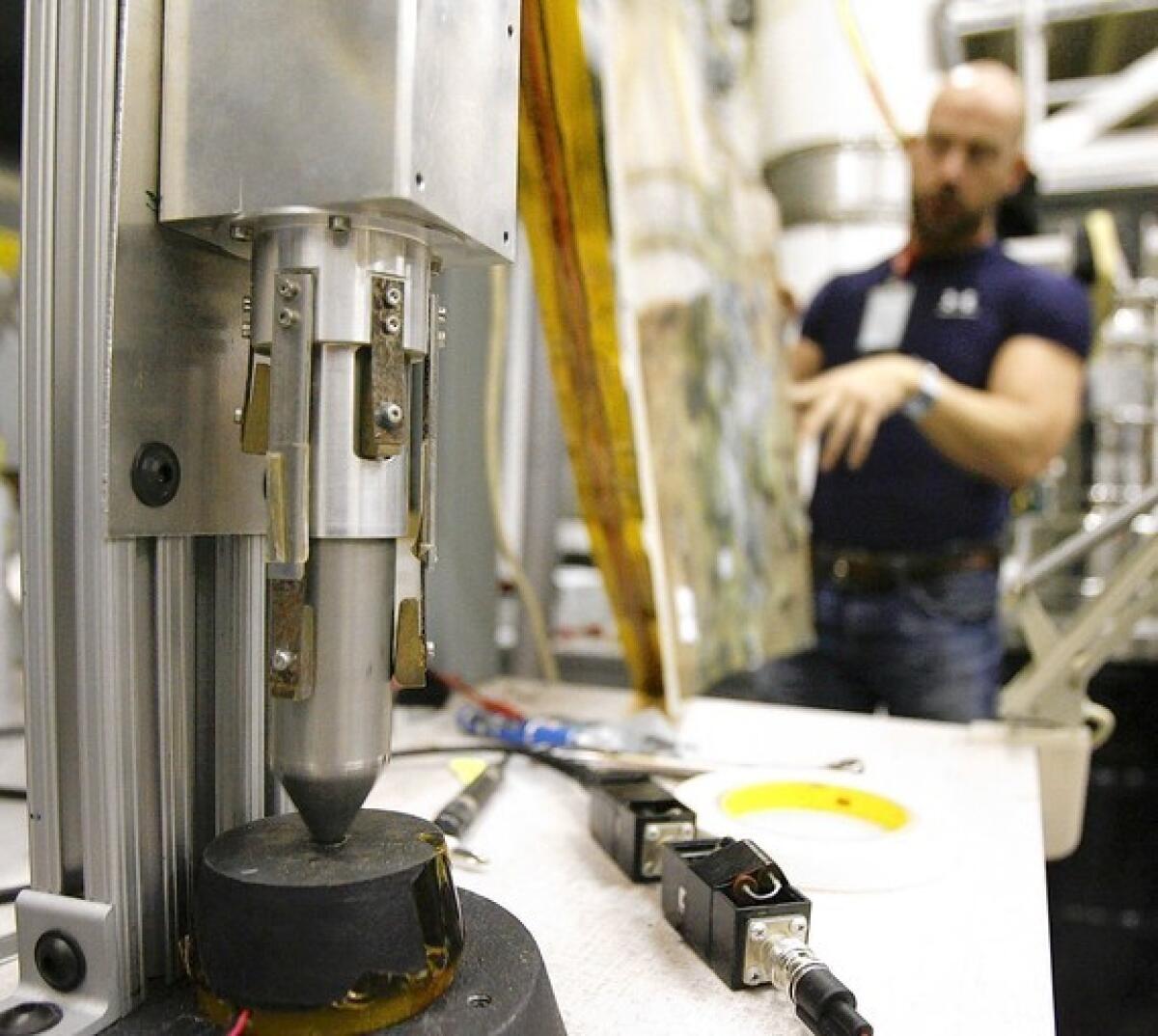JPL begins work on two new missions to Mars

Less than a year after the rover Curiosity’s successful landing on Mars, scientists and engineers at NASA’s Jet Propulsion Laboratory are at work on two new missions to the Red Planet.
The space agency last year announced that a new lander and rover would join Curiosity and fellow rover Opportunity on Mars. The InSight mission will launch a lander in 2016 that will explore the planet’s core, while a new rover, which will be similar to Curiosity both in look and design, is set to launch in 2020.
Scientists at the La Cañada Flintridge facility recently demonstrated how the lander would measure the heat flow of the planet with an instrument that is designed to probe five meters below ground. With a firm strike every three seconds, the long cylinder model with a cone tip, called a mole, gives off the sound of an ax hitting a hard surface.
“We call it a self-hammering nail,” said Troy Hudson, a co-investigator for the mission who previously worked on the Phoenix Mars lander.
But each strike will only get the instrument less than a millimeter down into the surface of the planet, he said. It will take thousands of tiny strikes to hit science gold. Once the instrument has been deployed to a depth of five meters, it will send back data for at least one Martian year to the lander through an attached heat-sensor-packed tether.
Scientists at JPL are currently testing the instrument’s ability to survive Mars’ internal temperature with a geothermal test bed, which uses sand from the Mojave Desert.
Along with the mole, the lander will be armed with a seismometer and radio tracking device, all designed to answer questions about how Mars formed, the amount of heat that radiates from its core, and its crustal thickness. The spacecraft will land in an area on Mars blanketed with several large volcanoes, called Elysium Planitia.
The mission could also shed light on how other rocky planets, including our own, are created.
“People have been excited to see rovers go to really interesting places for the geology, but we’re not going there for the surface,” said Sue Smrekar, InSight’s deputy principal investigator. “We’re going for the interior and we’re going not just to learn about Mars, but to learn about how bodies form and evolve overall.”
JPL is managing the mission, which is a collaboration with scientists and engineers from around the world. Lockheed Martin is developing the spacecraft and the German Aerospace Center (DLR) is building the mole.
The rover Curiosity had a smooth landing on Mars on Aug.5. Since then, it’s collected evidence to show that life could have once survived on the planet. JPL hopes to bring the technology that made the mission a success, including the infamous “seven minutes of terror” landing sequence, to the new rover.
The rover, which has yet to be named, is scheduled to launch in 2020. But dozens of scientists and engineers, mainly Curiosity veterans, are already working on the objectives for the new mission. A science team is set to release its goals for the mission in July. JPL has named John McNamee as the project manager and Matt Wallace as the deputy project manager of the new rover mission.
Wallace, who was the flight systems manager on Curiosity, said it’s unusual for a flagship mission to mimic a previous mission. “There’s some uniqueness in this mission in that we have the opportunity to use so much of what we did in Curiosity,” he said.
The new rover is slated to replicate Curiosity’s nail-biting landing sequence, which included the use of a “sky crane” and a 100-pound supersonic parachute. JPL also has some of the rover’s spare parts lying around, which it will incorporate into the new robot.
“It’s very exciting right now,” said Wallace. “This is one of the most dynamic parts of the project, when you’re really at the fundamental wellspring of the project and trying to understand where it’s going to go.”
--
Follow Tiffany Kelly on Google+ and on Twitter: @LATiffanyKelly.